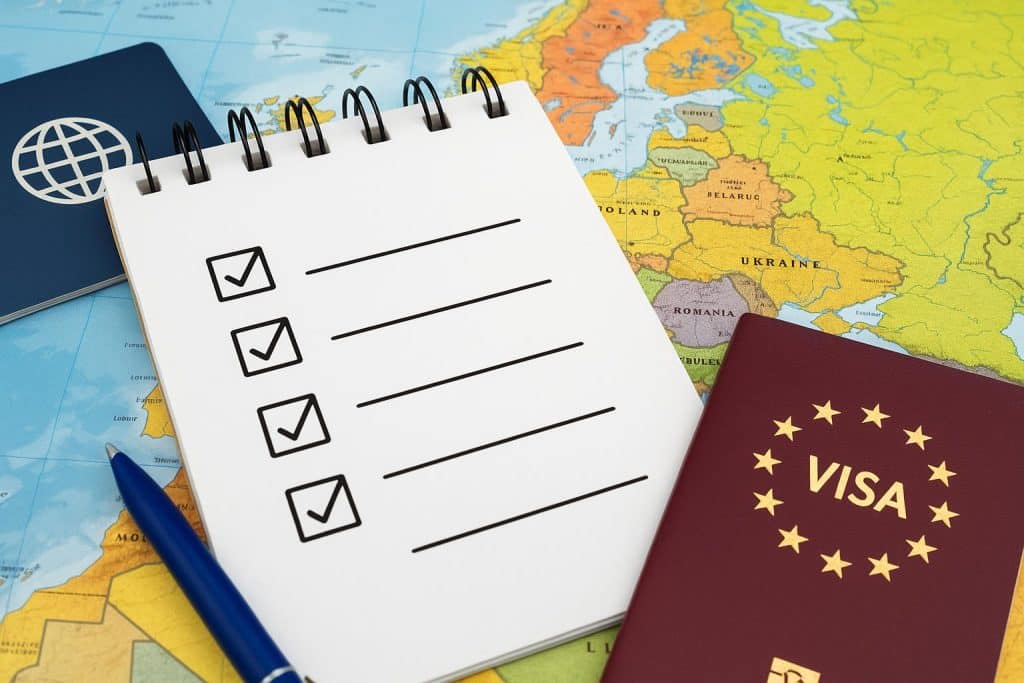Travelling to Europe is an exciting experience, but obtaining a Schengen visa can be overwhelming if you don’t have the right guidance. A rejected visa application can disrupt your travel plans, so preparing well in advance is crucial. To ensure a smooth application process, we’ve created a comprehensive checklist that covers everything you need to know.
What is a Schengen Visa?
A Schengen visa is a short-term visa that allows travellers to enter and move freely within 27 European countries, known as the Schengen Area. This visa eliminates the need for multiple visas when visiting different Schengen countries. It is typically valid for 90 days within a 180-day period.
Types of Schengen Visas
Depending on your purpose of travel, you will need to apply for the correct visa category:
● Tourist Visa: For leisure trips, sightseeing and vacations.
● Business Visa: For work-related travel, conferences or corporate meetings.
● Student Visa: If you plan to attend a short-term course or training.
● Family Visit Visa: For visiting relatives or friends in the Schengen Area.
● Transit Visa: If you have a layover in a Schengen country before flying to a non-Schengen destination.
Step-by-Step Schengen Visa Application Checklist
1. Plan and Apply Early
Timing is critical when applying for a Schengen visa. The earliest you can apply is six months before your trip, while the latest is 15 days before departure.
2. Find the Right Embassy to Apply
If you’re visiting multiple Schengen countries, apply at the embassy of:
● The country where you will spend the most days.
● The country of first entry (if staying in multiple countries for equal durations).
3. Complete the Visa Application Form
Each Schengen country has its own visa application form, available on their official embassy websites. Ensure that all information is accurate and consistent with your travel documents.
4. Gather the Required Documents
Your application will require the following:
● Valid Passport: Must be valid for at least three months beyond your departure from the Schengen Area.
● Visa Application Form: Correctly filled and signed.
● Recent Passport-Size Photographs: As per Schengen visa specifications (35mm x 45mm, white background).
● Proof of Financial Means: Recent bank statements, salary slips or a sponsorship letter.
● Flight Itinerary & Hotel Bookings: Proof of confirmed travel and accommodation arrangements.
● Cover Letter: Stating your travel purpose, itinerary and estimated expenses.
● Proof of Employment/Business: Employment letter or business registration certificate.
● Travel Insurance: Your application will not be accepted without valid travel insurance, covering medical emergencies and repatriation.
5. Purchase Travel Insurance
A Schengen visa requires valid travel insurance for Schengen, covering a minimum of €30,000 in medical expenses. You can conveniently buy travel insurance online or offline from a trusted insurer in India. Ensure your policy includes coverage for:
● Emergency medical expenses
● Trip cancellations or delays
● Lost baggage or personal belongings
● Repatriation due to illness or accident
6. Schedule an Appointment at the Visa Centre
Most Schengen embassies require applicants to book an appointment to submit biometric data (fingerprints and photographs). Schedule your slot in advance through the respective embassy or visa centre website.
7. Pay the Visa Fee
The standard Schengen visa fee is €80 for adults and €40 for children aged 6–12 years. Fees may vary slightly depending on nationality or visa type.
8. Attend the Visa Interview
During the appointment, you’ll be asked basic questions such as:
● What is the purpose of your visit?
● Which countries do you plan to visit?
● Do you have a return flight ticket?
● Who is financing your trip?
Answer confidently and honestly.
9. Collect Your Passport
Once approved, your passport will include a visa sticker. Double-check the following:
● Validity dates
● Number of entries permitted
● Visa type and any conditions
If there are any discrepancies, contact the embassy before your travel date.
10. Plan Your Trip and Follow Entry Rules
After receiving your visa:
● Carry photocopies of your visa and important documents while travelling.
● Abide by the Schengen visa validity rules.
● Ensure you have sufficient funds during your stay.
● Comply with entry and exit regulations of the Schengen Area.
11. Common Reasons for Visa Rejection and How to Avoid Them
● Incomplete Documentation: Submit all required documents accurately.
● Insufficient Financial Proof: Your bank statements should reflect adequate funds.
● Unclear Itinerary: Provide a detailed travel plan with confirmed bookings.
● Suspicious Travel History: Avoid overstaying visas; a clear record improves approval chances.
● Lack of Valid Travel Insurance: Ensure your travel insurance for Schengen meets the minimum coverage requirements.
Applying for a Schengen visa may seem daunting, but with proper preparation, the process can be straightforward. Start early, organise your documents meticulously, and adhere to embassy guidelines. Most importantly, secure travel insurance that meets Schengen requirements to support your application and give you peace of mind during your European adventure. You can buy travel insurance online or offline, as per your convenience.

